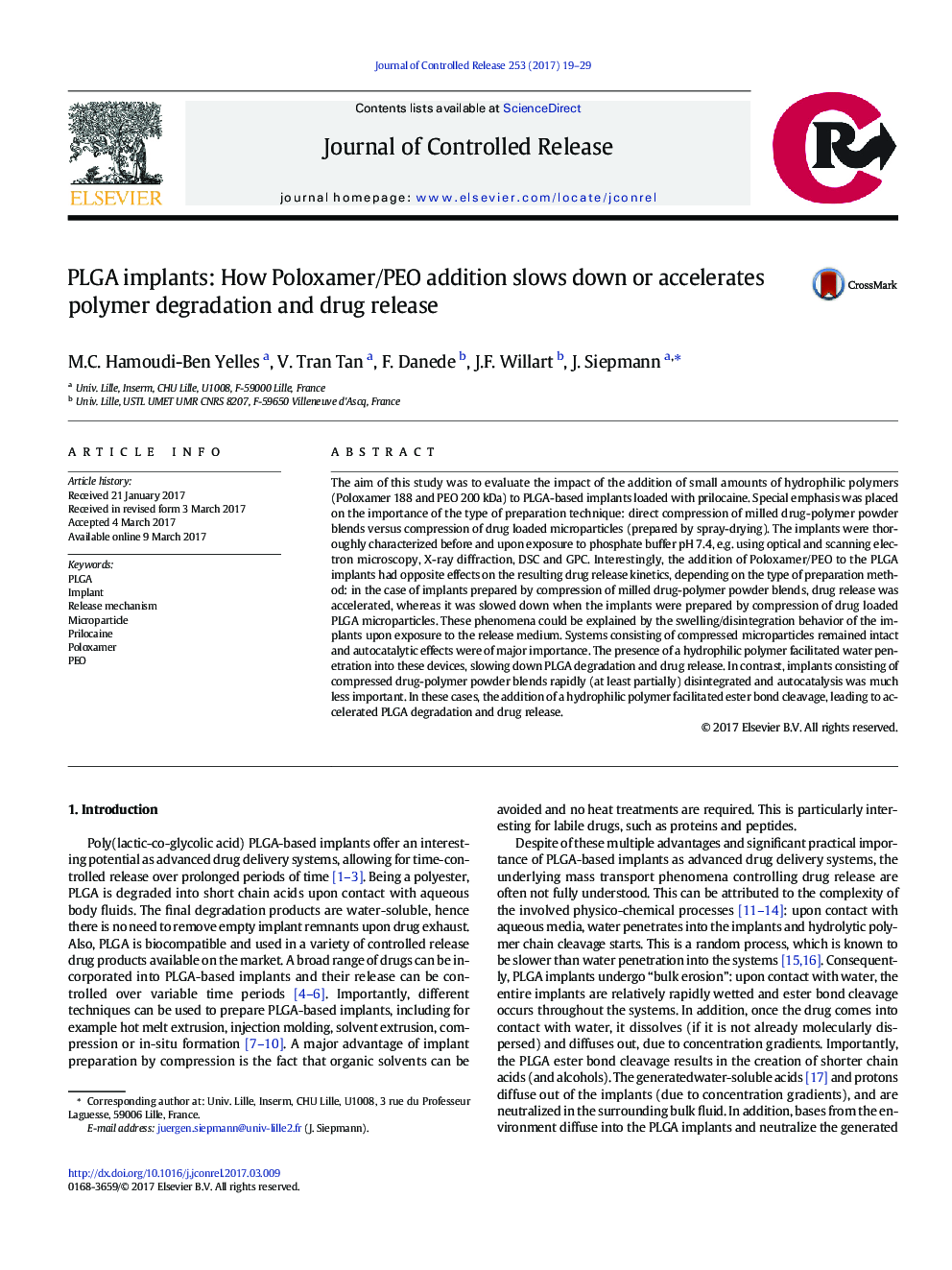| Article ID | Journal | Published Year | Pages | File Type |
|---|---|---|---|---|
| 5433557 | Journal of Controlled Release | 2017 | 11 Pages |
The aim of this study was to evaluate the impact of the addition of small amounts of hydrophilic polymers (Poloxamer 188 and PEO 200Â kDa) to PLGA-based implants loaded with prilocaine. Special emphasis was placed on the importance of the type of preparation technique: direct compression of milled drug-polymer powder blends versus compression of drug loaded microparticles (prepared by spray-drying). The implants were thoroughly characterized before and upon exposure to phosphate buffer pHÂ 7.4, e.g. using optical and scanning electron microscopy, X-ray diffraction, DSC and GPC. Interestingly, the addition of Poloxamer/PEO to the PLGA implants had opposite effects on the resulting drug release kinetics, depending on the type of preparation method: in the case of implants prepared by compression of milled drug-polymer powder blends, drug release was accelerated, whereas it was slowed down when the implants were prepared by compression of drug loaded PLGA microparticles. These phenomena could be explained by the swelling/disintegration behavior of the implants upon exposure to the release medium. Systems consisting of compressed microparticles remained intact and autocatalytic effects were of major importance. The presence of a hydrophilic polymer facilitated water penetration into these devices, slowing down PLGA degradation and drug release. In contrast, implants consisting of compressed drug-polymer powder blends rapidly (at least partially) disintegrated and autocatalysis was much less important. In these cases, the addition of a hydrophilic polymer facilitated ester bond cleavage, leading to accelerated PLGA degradation and drug release.
Graphical abstractDownload high-res image (144KB)Download full-size image
